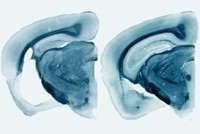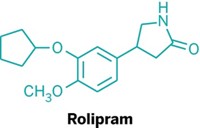Advertisement
Grab your lab coat. Let's get started
Welcome!
Welcome!
Create an account below to get 6 C&EN articles per month, receive newsletters and more - all free.
It seems this is your first time logging in online. Please enter the following information to continue.
As an ACS member you automatically get access to this site. All we need is few more details to create your reading experience.
Not you? Sign in with a different account.
Not you? Sign in with a different account.
ERROR 1
ERROR 1
ERROR 2
ERROR 2
ERROR 2
ERROR 2
ERROR 2
Password and Confirm password must match.
If you have an ACS member number, please enter it here so we can link this account to your membership. (optional)
ERROR 2
ACS values your privacy. By submitting your information, you are gaining access to C&EN and subscribing to our weekly newsletter. We use the information you provide to make your reading experience better, and we will never sell your data to third party members.
Biological Chemistry
DNA Damage Linked To Alzheimer’s
Mice engineered to produce the disease-related peptide amyloid-beta have more breakage in their nerve cell DNA than do nonengineered mice
by Lauren K. Wolf
April 1, 2013
| A version of this story appeared in
Volume 91, Issue 13
Not only does amyloid-β, the hallmark biomolecule associated with Alzheimer’s disease, trigger an inflammatory response in the brain when it aggregates, it probably also increases nerve cell DNA damage, according to a report (Nat. Neurosci., DOI: 10.1038/nn.3356). Commenting on the study, Peter J. McKinnon, a geneticist at St. Jude Children’s Research Hospital, in Memphis, says it provides “new insights into how the Alzheimer’s-related factor may lead to cell loss and neurodegeneration associated with the disease.” A team led by Lennart Mucke of the University of California, San Francisco, measured breaks in the nerve cell DNA of normal mice and of mice engineered to produce human amyloid-β. The team found that the engineered mice had up to four times as many nerve cells containing damaged DNA in their brains as did normal mice. When the team gave the antiepilepsy drug levetiracetam to amyloid-positive mice for a month, levels of DNA damage in nerve cells decreased to those found in nonengineered mice. According to Mucke, amyloid-β seems to increase DNA damage by provoking abnormal nerve activity, something that FDA-approved levetiracetam suppresses.





Join the conversation
Contact the reporter
Submit a Letter to the Editor for publication
Engage with us on Twitter